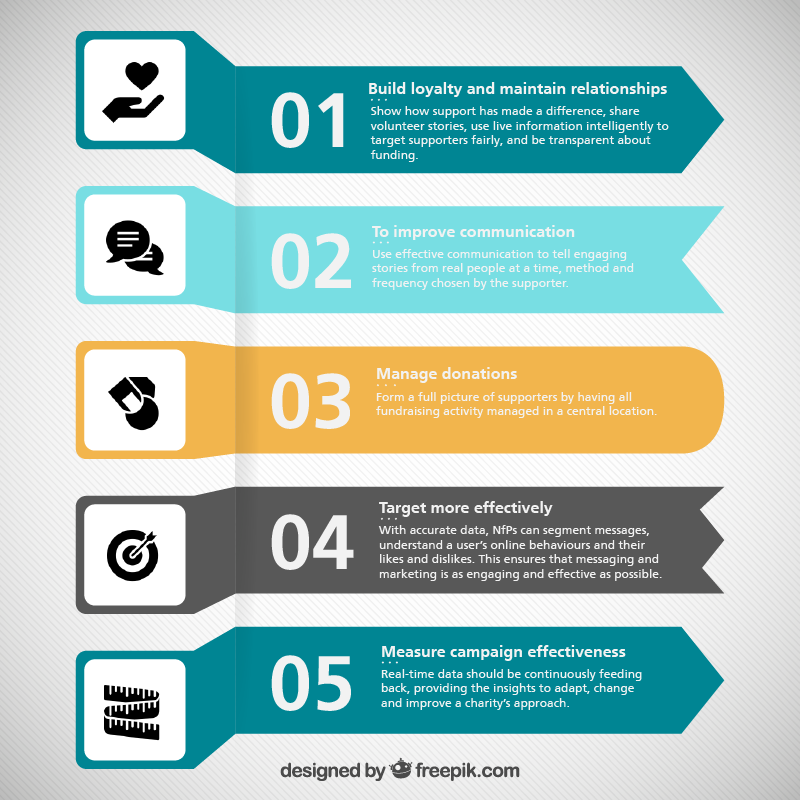The way we communicate is constantly evolving. The rise of portable technology allows messages and transactions to be exchanged instantly. For the likes of charities and Not-for-Profit (NfP) organisations, keeping up with digital innovation and how their supporters want to communicate with them can seem challenging and expensive. In order to digitally innovate, charities require a strategy that identifies their goals and embraces the use of appropriate technology in order to achieve them. According to research conducted by eduserv, 50% of charities say they don’t have a digital strategy to work to.
So why should charities and NfP organisations digitally innovate?

The top 5 reasons why charities should digitally innovate
1.To build loyalty and maintain relationships
In order to succeed, third sector organisations need to manage complex relationships between volunteers, supporters and beneficiaries. These critical relationships are built on trust. In the past year, nfpSynergy research has found that trust in charities has fallen to just 54% – down 6% from the previous year. With a focused digital strategy, organisations can show their audience how their support has made a difference, share volunteer stories, use live information intelligently to target supporters fairly, and be transparent about funding. This helps to build confidence, restore trust and gradually turns one-off donors into life-long supporters.
2.To improve communication
Effective communication and content doesn’t just promote an organisation; it uplifts, empowers and informs; helping to build stronger bonds with a charity’s audience. NfPs naturally have authentic and engaging stories from real people with real results. Nothing is manufactured, plus supporters are given a choice as to how and when they want to be communicated with, making connections more meaningful when they do occur.
3.Manage donations
With the rise of online platforms such as Just Giving, text alerts and direct debits, it has never been easier for supporters to donate. In fact, 60% of people reported giving money to charity in 2017, according to research by the Charities Aid Foundation. Accessibility is no doubt a key factor in this figure. But managing the pace of changes brings with it its own challenges, and to form a full picture of your supporters, all fundraising activity should be managed from a central location. Delivering you the kind of insight that can inform campaigns from end to end.
4.Target more effectively
Every interaction with every volunteer or donor is important, helping to create a complete profile of each individual. From here, sophisticated, personalised campaigns that will engage and convert can be built. As well as its supporters, a charity’s most valuable resource is data. With accurate data, NfPs can segment messages, understand a user’s online behaviours and their likes and dislikes. This ensures that messaging and marketing is as engaging and effective as possible.
5.Measure campaign effectiveness
With a smart digital strategy, real-time data should be continuously feeding back, providing the insights to adapt, change and improve a charity’s approach. Whether it’s social media engagement, email click through rates or brand awareness, NfPs need to be able to report on every detail of a campaign, so that return on investment can be tracked.
Once the decision is made to digitally innovate and develop a strategy that revolutionises internal systems and services, charities need to look at effective solutions that can meet their requirements. Many are turning to dynamic and reliable CRM systems. From one central place, charities can build strategic marketing campaigns informed by data, report and track their fundraising performance, automate marketing activity and monitor social media conversations.

